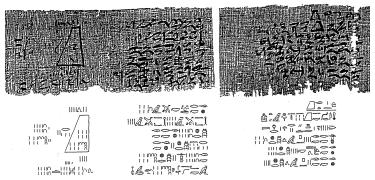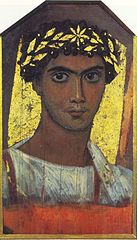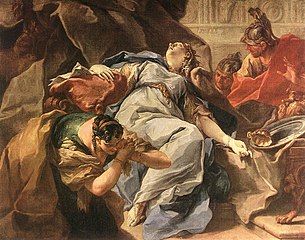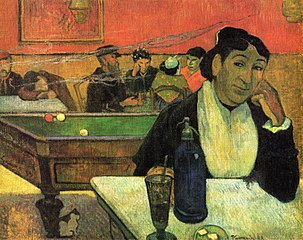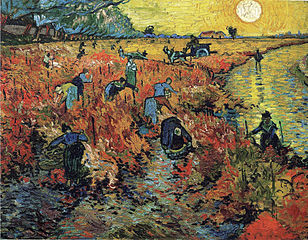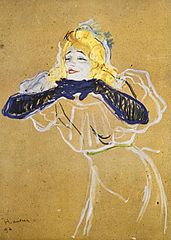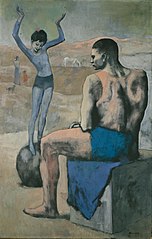Pushkin Museum
Государственный музей изобразительных искусств имени А. С. Пушкина | |
 Pushkin Museum of Fine Arts | |
 Interactive fullscreen map | |
| Established | 1912 |
|---|---|
| Location | 12,Volkhonka Street,Khamovniki,Moscow,Russia |
| Coordinates | 55°44′49.304″N37°36′21.704″E/ 55.74702889°N 37.60602889°E |
| Type | Art museum |
| Founder | Ivan Tsvetaev |
| Director | Elizaveta Likhacheva |
| Public transit access | |
| Website | pushkinmuseum |
ThePushkin State Museum of Fine Arts(‹See Tfd›Russian:Музей изобразительных искусств имени А. С. Пушкина,abbreviated as‹See Tfd›Russian:ГМИИ) is the largest museum of European art inMoscow.It is located in Volkhonka street, just opposite theCathedral of Christ the Saviour.The International musical festivalSviatoslav Richter's December nightshas been held in the Pushkin Museum since 1981.
Etymology
[edit]Despite its name, the museum has no direct association with the Russian poetAlexander Pushkin,other than as a posthumous commemoration. The facility was founded by professorIvan Tsvetaev(father of the poetMarina Tsvetaeva) in 1912. Tsvetaev persuaded themillionaireandphilanthropistYuriy Nechaev-Maltsovand the architectRoman Kleinof the urgent need to give Moscow a fine arts museum. After going through a number of name changes, particularly in the transition to the Soviet era and the return of the Russian capital to Moscow, the museum was finally renamed to honour Pushkin in 1937, the 100th anniversary of his death.
History
[edit]During theBolshevik Revolution,works by French impressionists and modern artists were confiscated and then exhibited in theHermitage Museumin Saint Petersburg before being privately stored. In 2019, those works reappeared and some of them rejoined the Pushkin museum.[1]In 1981, the museum held theMoscow-Parisexhibition.[1]In 2016, art historians discovered 59Italian Renaissancesculptures in the Pushkin Museum that had been missing from Berlin's collections since the Second World War.[2]
In March 2022, a number of museums officials, including deputy directors, resigned to protest againstRussia's invasion of Ukraine.[3]
Building
[edit]The building of the Pushkin State Museum of Fine Arts was designed byRoman KleinandVladimir Shukhov.Construction lasted from 1898 until early 1912, withIvan Rerbergheading structural engineering effort on the museum site for the first 12 years.
In 2008, PresidentDmitri A. Medvedevannounced plans for a $177 million restoration.[4]A 22 billion rubles ($670 million) expansion, developed byNorman Fosterin collaboration with local architectural firm Mosproject-5, was confirmed in 2009, but became mired in disputes with officials and preservationists and concern grew that it would not be completed on schedule for 2018. After Moscow's chief architectSergei Kuznetsovissued an ultimatum, demanding that Foster take a more active role in the project and prove his commitment by coming to the Russian capital within a month, Norman Foster's firm resigned from the project in 2013.[5]In 2014, Russian architect Yuri Grigoryan, and his firm Project Meganom, were chosen to take over the project. Grigoryan's design provides new modern buildings and, following the protest of heritage groups who campaigned to save the pre-revolutionary architecture, preserves the historic 1930s gas station near the Pushkin's main building inside a glass structure.[6]
Collection
[edit]The holdings of the Pushkin State Museum of Fine Arts currently include around 700,000 paintings,sculptures,drawings,applied works, photographs, and archaeological and animalistic objects.
Painting
[edit]
The earliest monuments from the museum collection are pieces ofByzantine art:mosaicsandicons.The early stage of development of Western European painting is represented by a relatively small collection of Italian Primitives. The hall of earlyItalian artwas opened on October 10, 1924.
Graphic art
[edit]The Department of Prints and Drawings was founded in 1924, when the museum received the holdings of the Printing Cabinet of the Moscow Public andRumyantsev Museum.In 1861, Alexander II made a valuable gift to the Printing Cabinet: the Moscow Public and Rumyantsev Museum received more than 20,000 prints from the Hermitage.
Sculpture
[edit]The collection of Western European sculptures includes more than 600 pieces. The museum has expanded its holdings over the years and currently owns artworks from the 6th-21st centuries. The first artifacts presented to the Museum of Fine Arts were sculptures from Mikhail Schekin's collections. After the revolution, the museum received sculptures from nationalized collections.
Collection of decorative art pieces (Department of the Old Masters)
[edit]The collection of decorative art pieces from Europe includes around 2,000 items. The earliest are from theMiddle Ages,and the set as a whole is very diverse.
Archaeological collection
[edit]
The Museum of Fine Arts was intended primarily as a museum of classical arts. Ancient artifacts were the core and the main components of its collection, and the Department of Antiquity was one of the three major scientific departments. Its founder and director, Ivan Tsvetaev (1847-1913), was an expert in ancient art, as were his closest associates, Vladimir Malmberg (1860-1921) and Nikolay Scherbakov (1884-1933).
Egypt
[edit]Most of the objects presented in Hall No. 1 have been on display since the museum opening in 1912 and come from the collection of Vladimir Golenishchev (1856-1947).
Ancient civilizations
[edit]The museum holdings of genuine artifacts of Southwest Asia are based on the collection of Russian Orientalist and Egyptologist Vladimir Golenishchev.
Antiquity
[edit]The antique collection of the Pushkin State Museum of Fine Arts includes many genuine artifacts: more than 1,000 vessels, small plastic pieces, and sculptures.
Tsvetaev's collection of casts
[edit]The collection of casts and copies, typical for European museums of the nineteenth century, is unique today in its preservation and consistency. With a similar cohesiveness, Tsvetaev wanted to present plastic art of the modern era and complete the collection with casts made from contemporary sculptures, whereAuguste Rodin's works would take the central place.
Numismatic collection
[edit]Today, the holdings of the Numismatics Department of the Pushkin State Museum of Fine Arts form a collection in excess of 200,000 items and 3,000 volumes of the special library. It was started at Imperial Moscow University. In 1888, the collection was divided and formed the basis for the major numismatic collections of Moscow that belonged to the Historical Museum and the Alexander III Fine Arts Museum.
Since 1912, objects of ancient and Western European numismatics from the university collection were transferred to the Sculpture Department of the Fine Arts Museum and mostly kept packaged. By June 1925, museum custodians had grouped together a number of cases with coins, medals, and casts and created the Numismatic Cabinet located on the balcony of the White Hall. In 1945, the museum's Numismatic Cabinet became an independent department. It includes archaeological material from Central Asia, such as a hoard of Kushano-Sasanian coins acquired in 2002[7]
Museum Quarter
[edit]The work on the Museum Quarter of the Pushkin State Museum of Fine Arts started in the late 2000s. In 2019–23, the Main Building of the Pushkin State Museum of Fine Arts will be reconstructed.
Gallery
[edit]-
AnnunciationbySandro Botticelli,c. 1495-1498
-
Madonna and a ChildbyLucas Cranach the Elder,c. 1520
-
Apparition of the Sybil to the emperor AugustusbyParis Bordone,c. 1550
-
Death of SophonisbabyGiambattista Pittoni,first half of the 18th century
-
Fastnacht (Mardi Gras)byPaul Cézanne,1888
-
The Night Cafe, ArlesbyPaul Gauguin,1888
-
The Red VineyardbyVincent van Gogh,1888, only van Gogh painting sold in his lifetime
-
Blue DancersbyEdgar Degas,1897
Directors
[edit]1961-2013:Irina Antonova[1]
2013-March 2023:Marina Loshak[8]
References
[edit]- ^abcSolomon, Tessa (2020-12-01)."Irina Antonova, Longtime Head of Moscow's Pushkin Museum, Dies at 98 of Covid-19".ARTnews.Retrieved2022-03-26.
- ^Hickley, Catherine (19 May 2016)."Berlin's lost Renaissance sculptures rediscovered in the Pushkin Museum".The Art Newspaper.Retrieved26 March2022.
- ^Kinsella, Eileen (2022-03-04)."Directors of Russia's Top Art Museums and Fairs Are Resigning En Masse".Artnet News.Retrieved2022-03-26.
- ^Lawrence Van Gelder (May 9, 2008),Pushkin Museum Overhaul PlannedNew York Times.
- ^Sophia Kishkovsky (August 16, 2013),Norman Foster resigns from Pushkin Museum expansionArchived2013-08-17 at theWayback MachineThe Art Newspaper.
- ^Sophia Kishkovsky (July 2, 2014),Pushkin hires Moscow architect for expansionArchived2014-07-14 at theWayback MachineThe Art Newspaper.
- ^Smirnova, N (1996). "Vasudeva Imitations and Kushano Sasanian Coppers from Turkmenistan".Moneti I Medali.pp. 130–133.
- ^"Administration".pushkinmuseum.art.Retrieved2023-04-21.
Further reading
[edit]- William Craft Brumfield.The Origins of Modernism in Russian Architecture(Berkeley:University of California Press,1991)ISBN0-520-06929-3
External links
[edit]- Official website
- Museum Quarter official website
- The Morozov/Shchukin's collections,morozov-shchukin
- Pushkin Museum History,SmashPixels
- Pushkin Museum of Fine Arts (Moscow)
- The Opening of the Museum,English.tsvetayeva
- Photo (1024x768),otdihinfo.ru
- Virtual tour of the Pushkin Museumprovided byGoogle Arts & Culture
 Media related toPushkin Museumat Wikimedia Commons
Media related toPushkin Museumat Wikimedia Commons
- Pushkin Museum
- 1912 establishments in the Russian Empire
- Art museums and galleries in Moscow
- Art museums and galleries established in 1912
- Cultural heritage monuments of federal significance in Moscow
- Egyptological collections in Russia
- Museums of ancient Greece in Russia
- Museums of Ancient Near East in Russia
- Museums of ancient Rome in Russia
- Plaster cast collections
- Roof structures by Vladimir Shukhov
- Tourist attractions in Moscow



